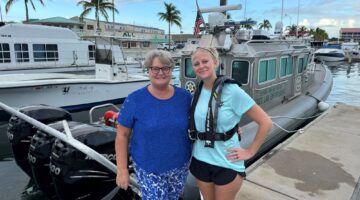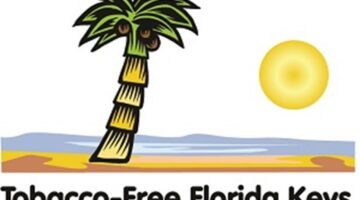Poison in the Water aka Shallow Wells Part 4
By Diane Johnson
The Florida Department of Environmental Protection (FDEP) never required the Florida Keys Aqueduct Authority (FKAA) to conduct an Environmental Assessment, let alone an Environmental Impact Study before selecting the old landfill on Cudjoe as the site for the Wastewater Treatment Plant; and now we know why. It would have failed the test. Unlike most landfills, the Cudjoe site was not constructed with a liner to protect the surrounding environment, meaning that whatever was dumped there could leach unimpeded into the land and potentially into the water. And now we have proof.
At the urging of local activist group Dig Deep Cudjoe, FKAA engaged Dr. Henry Briceno, of Florida International University and Dr. Eugene Shinn, University of South Florida to conduct a tracer dye study to determine whether fresh water injected into the shallow wells would end up in the near shore waters. Their discoveries are twofold: first, there is interconnectivity between the shallow wells and the surface waters as the dye migrated laterally, and secondly they discovered the presence of Fluorescein and Rhodamine, used to color automobile antifreeze.
The diagram below, from the Final Report, shows how freshwater injected into a shallow well rises back up into the near shore water.
Upon reading the report, Chris Bergh, Director of the Nature Conservancy for South Florida explained: “Putting these two facts together leads me to the conclusion that the groundwater under and surrounding the Cudjoe Key landfill is likely to contain substances other than Fluorescein and Rhodamine and that those other substances are likely to be mobilized into the surface environment by injection of treated wastewater at the depths of the existing shallow wells. This makes me extremely uneasy”. Imagine a daily flushing of the chemicals from the landfill into the near shore waters.
Also commenting on Briceno’s report, Monroe County Commissioner Rice expressed his concerns this past Friday on U.S. 1 Radio’s Morning Magazine with Bill Becker. He acknowledged “…the connection between the shallow wells and the near shore waters, which is why we funded the deep well.” The question he posed was “…where did this stuff come from ?” He went on to say “…we’ll probably be learning more about that”.
Billy Causey of the Florida Keys Marine Sanctuary is equally concerned about the presence of heavy metals and chemicals in the landfill. “We are all concerned about water quality and don’t want to see anything less than success. We must remain alert and I am confident we can find a combination of the right science and the right technology to address the problems.”
The solution is clear, don’t hook up residents to the plant without performing a thorough scientific study and risk assessment, including a baseline analysis of the water. But FKAA doesn’t think any more studies are necessary and plans to start up the plant in May and begin hooking up residents in June. Thus far FDEP has not been attentive to our serious environmental concerns. The Environmental Protection Agency only steps in after the fact, so no help there either. Here’s the irony: FKAA is spending millions of our hard earned tax dollars to bring us a “modern” sewer system that will potentially foul our waters for the next 2 – 3 years while they take their sweet time permitting and constructing a deep well.
Chris Bergh stated his position: “…we do not want to see the dice rolled on this project without a clear scientific consensus that the potential harm of shallow wastewater injection at this site is less than the known harm of diffused nutrient pollution throughout the region of the wastewater collection system.”
Stay Tuned for Part 5
[livemarket market_name="KONK Life LiveMarket" limit=3 category=“” show_signup=0 show_more=0]







No Comment